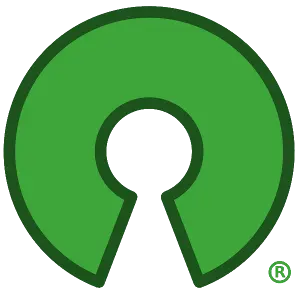Syncthing, a peer to peer file synchronize that basically everyone needs, they just don’t know it.
It’s insane how many services sell file synchronisation as a premium feature when syncthing can do it for free and no one seems to use it
The best part is it works with Android as well. Whenever I turn my computer on, all my photos on my phone sync to my computer to a folder that gets regularly backed up (using Vorta which is an excellent and easy to use open source backup program for Windows, Linux, and Mac)
For images I highly recommend Immich. It’s the Google Photos equivalent, and it works excellently.
I use SyncThing for documents, but photos from my phone go to Immich.
OpenStreetmap as an alternative to the closed source maps.
OrganicMaps or OsmAnd to navigate and StreetComplete or EveryDoor to improve it.
Yes yes. It’s so satisfying contributing to OSM and seeing my changes pop up in OrganicMaps knowing it might help somebody and support open mapping data. I wonder if Wikipedians feel that way.
The Humanitarian OSM Team is cool too https://www.hotosm.org/
streetcomplete is a great companion app. It makes it really easy to add points of interest and help collect other data. I’ve already made over a thousand edits using it.
Jitsi - Open-source and self-hosted video conference platform. You can even try it directly on their website.
IPFS - A distributed file sharing technology which is wonderful for file or site hosting (edit: wether it is uncensorable is open for debate)
Rust - A programming language and a powerful compiler that creates compiled memory-safe programs and can be used nearly everywhere
Fedora + KDE - A combination of a stable modern OS and a complete desktop environment
Wine - launch Windows programs on the latter
Lemmy
Bonus : AlternativeTo to find good open-source alternative software
LocalSend, a cross platform alternative to airdrop and nearby share.
My family uses it for almost all of our filesharing. IPhone to android, iPhone to windows PC, android to macbook, etc. Its works really, really well.
Ooh I use apps that use the Magic Wormhole library. There’s a linux app for it called Warp and several android apps, all FOSS.
KepassXC for PC and KeepassDX for Android phones.
I personally would recommend it over Bitwarden since with Bitwarden you NEED internet to access your passwords, and even if is open source, i canmot trust it, security breaches can happen in any time, having your vault locally stored helps a lot.
There are more but i can’t Remember them right now.
You don’t need internet to access the passwords stored in Bitwarden if you have their local clients installed. It stores an encrypted copy of your database locally to your device which syncs (updates) over the internet.
I just tried because you made me doubt, but you can access your passwords offline with bitwarden. Your argument about trusting a third party is far more pertinent, i’m choosing to trust them but thats really my choice. It is also a limited trust: even in a case of a data breach, bitwarden is encrypted end-to-end with your password, even if someone gets access to your data they wont be able to read it without your master key.
Don’t you still need internet to access your passwords if you want to use Keepass across devices?
Nope, sonce your Keepass database is store locally, all you need is Syncthing, you won’t beleive how easy it is to use.
You don’t. KeePass databases can be easily shared totally offline.
However, it all depends on “how easy” you want the sync to happen…
There are many ways to “sync” KeePass databases, basically you just have to copy password database among the devices, which can be done totally offline.
- HARD - Manually copy the KeePass database to the devices
- Can be accomplished via any Network connection or USB cable connection
- EASIER - Put the database on any file sharing service that’s available on your devices, and sync that
- The file sharing service can be available on the internet (Google Drive, OneDrive, iCloud…), but it also works with any file sharing service that’s not connected to the internet (e.g.: local only Nextcloud server, or not even that, using Syncthing if that’s your thing…, which would not even require a local server)
So, I’ll just give one example.
If you have 2 devices:
- Linux PC
- Android Phone
You can use KeePassXC on the Linux PC, and KeePassDX on the Android Phone, and have a copy of your kdbx file (the encrypted database) on each device, manually copying the newer version whenever there are changes on them.
Issues that might happen: consistency between the files in case you make changes to both databases and forgot to sync manually previously. There’s no easy way to handle this currently afaik if you are doing manual syncs… I’d suggest maintaining one of the databases as “kinda read only”, not performing edits on it unless you can immediately copy it to the other one.
You can do the same thing above, but instead of manually copying the files among the devices you can use Syncthing… Or if you have a local Nextcloud server, you can use that to share the files, which is pretty easy to use to ensure consistency if you are using KeePassXC and KeePassDX, since if you open the database on Android using KeePassXC directly to the “file system” that links to the Nextcloud folder, it will always automatically retrieve the newest version to your device if there has been any change and if your local Nextcloud server is reachable, otherwise it just uses the local cache, and you will know it’s using the local cache and was not able to sync.
Here’s an easier option: Syncthing
- HARD - Manually copy the KeePass database to the devices
These would also be my top two apps. Absolutely essential pieces of kit IMO.
The android integration is just so good these days. Syncing is the only minor issue but it is minor.
Hoe do you sync it? I’ve been meaning to make the switch to these for a long time now, but still not gotten around to it.
I used to use Dropbox, but switched to Nextcloud years ago.
Do you use KeePassDX on Android? If so, how do you access the vault from Nextcloud?
I’ve been using KeePassDroid. Nextcloud has an option to set files to favorites which keeps them local on Android.
But how do you access the files from another app? Where are they stored? I have nothing in the com.nextcloud.client folder for example. Proton Drive mounts in the left-hand menu of Files. Would be nice if that was achievable with Nextcloud also.
EDIT: Turns out it does if there is no app passcode enabled. Not sure I am comfortable having that turned off though.
Paperless-ngx that allows you to self host an easily browseable archive of your documents. Fully featured with OCR, ML-powered categorization and the works.
yunohost it’s basically an os that easily lets you selfhost, by having an extremely big amount of selfhosted services packaged with scripts that autonatically set everything up and all of that trough a clear and modern web interface.
Immich. Just found out about it, still gotta try, but looks good, an app that allows you to configure a Google Photos like app locally hosted, with automatic phone backups
TrailSense, an easy to use, comprehensive wilderness tool.
The goals of the developer are fun to consider:
Goals
-
Trail Sense must not use the Internet in any way, as I want the entire app usable when there is no Internet connection
-
Features must provide some benefits to people using the app while hiking, in a survival situation, etc.
-
Features should make use of the sensors on a phone rather than relying on stored information such as guides
-
Features must be based on peer-reviewed science or be verified against real world data
Likewise, the features being developed under those goals are great for getting outside:
Features
- Designed for hiking, backpacking, camping, and geocaching
- Place beacons and navigate to them
- Follow paths
- Retrace your steps with backtrack
- Use a photo as a map
- Plan what to pack
- Be alerted before the sun sets
- Predict the weather
- Use your phone for astronomy
- And more
How does the metal detector work? I’ve never heard of a phone being able to do that.
It uses the magnetic field sensor on the phone (compass). It can only detect magnetically active metals and also kinda weakly, but it’s quite fun!
-
linux, unironically. literally all local infrastructure is running on windows, despite the security risks this entails.
VSCodium is the open source part of VSCode, so I prefer to use that.
Mull is firefox on android without the proprietary parts. Heliboard is a good android keyboard.
Bitwarden an open source, simple password manager it does it’s job very well
DietPi, for setting up an SBC (ie raspberry pi) with common server software. very good for a first-time self hoster like myself.
KDEConnect - I use it on Windows and android phone. Very nice when you get security codes or links on phone, want to send files or when I want to control audio|video and I watch from the couch.
in general: Fdroid nearly always has a more feature rich and performant alternative
croc is a tool that allows any two computers to simply and securely transfer files and folders.
https://schollz.com/tinker/croc6/
- allows any two computers to transfer data (using a relay)
- provides end-to-end encryption (using PAKE)
- enables easy cross-platform transfers (Windows, Linux, Mac)
- allows multiple file transfers
- allows resuming transfers that are interrupted
- local server or port-forwarding not needed
- ipv6-first with ipv4 fallback
- can use proxy, like tor
Another thing like that I wish I’d discover sooner is syncthing - it’s really intuitive, just point it to a folder and it syncs stuff across your devices automatically. With it, a lot of cloud storage, backup and file transfer applications and features are completely redundant.
EDIT: Ah, I did not scroll far enough to see that this recommendation is literally the next comment from this.









